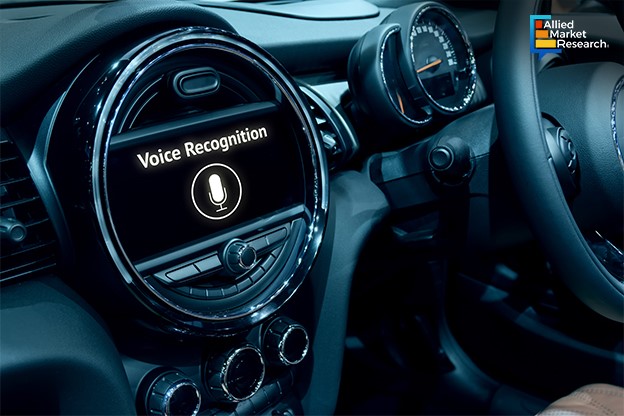Advances in Automotive Voice Recognition Systems Redefining the In-Car Experience

20 May
2024
Highlights:
- New technologies in automotive voice recognition systems
- Volkswagen’s new voice control system
- Promising alliances made by leading players in the sector
In the past few years, the automotive industry has undergone huge transformation with the rise of voice assistant technologies. The integration of voice technologies in automotives has brought new possibilities in the domain, enabling cars to become more autonomous, more personalized, and more connected. With growing consumer interest in using voice AI to enhance the driving experience, many manufacturers are emphasizing this latest in-car technology. Voice commands provide drivers with a safe and more convenient way to interact with their vehicles, minimize distractions and allow for hand-free operation. However, the use of NLP and AI-based voice modulation has further enhanced the experience paradigm, by making the automotive voice recognition system responsive and adaptable to individual preferences.
Technological integration in automotive voice recognition systems
With the continuous technological advancements, many leading car manufacturers are integrating the latest technologies such as NLP, AI, and cloud technology to promote user experience. The integration of natural language processing (NLP) models and audio speech recognition into voice assistants allows individuals to get more contextually relevant and accurate responses. For instance, Google’s AI model-SpeechStew, trained on a dataset combining over 5,000 hours of labeled and unlabeled speech data, resulted in superior performance, addressing more complex tasks, such as operating navigation systems, climate control, and captivating individuals with various entertainment channels. The company’s recently released Speech-to-Text API utilized a neural sequence-to-sequence model, enhancing user interface and speech recognition accuracy across 23 languages.
On the other hand, many automotive manufacturers are incorporating cloud technology to handle complex algorithms and vast databases. This would further allow for more sophisticated voice interactions without overloading the vehicle’s onboard computing resources. Cloud integration in automobiles also allows for real-time language processing, personalized responses, and seamless connectivity to various online services. This is expected to enhance the overall user experience. Due to these promising benefits, the cloud-based technology segment is expected to be the fastest-growing with a CAGR of 17.06% during the estimated timeframe 2023-2032.
A key innovation in the domain – Volkswagen's ChatGPT-Powered Voice Control System
With the rise of OpenAI’s ChatGPT and LLM, many automotive companies have started connected to these models tangentially either by developing their own systems or by integrating the OpenAI version into their products. For instance, in January 2024, Volkswagen debuted its ChatGPT-enhanced digital voice assistant at a global tech event, CES 2024. This newly designed voice recognition system is powered by Massachusetts-based Cerence, the automotive division of Nuance, a pioneer in voice recognition systems. This ChatGPT-powered voice recognition system helps parsing voice requests and enables a wide array of functions like controlling infotainment, navigation, and climate functions. With this launch, the company aimed to ensure users with the accuracy of responses when running a vehicle.
Pivotal steps taken by top players reshaping the industry landscape
Many leading players in the automotive voice recognition system industry have constantly worked to leverage the use of AI in automobiles to enhance users’ in-car experience. For instance, in January 2024, Amazon, an American multinational technology company announced its collaboration with BMW, a German multinational manufacturer of luxury vehicles and motorcycles to showcase a new car voice assistant combining Alexa with the power of large language models (LLM) and vehicle-relevant data. This upgraded BMW intelligent personal assistant would theoretically meld the conversational capacity of ChatGPT with the information in the car’s manual and the power to carry out any requested task related to the vehicle. This voice assistant could recommend and activate the best driving modes based on the car’s location.
On the other hand, in July 2022, Nuance Communications, Inc., an American multinational computer software technology corporation announced its acquisition of SVOX, a provider of voice solutions for in-car systems and consumer electronics. With this acquisition, the companies aimed to advance the proliferation of voice in the automotive market and accelerate the development of new voice capabilities, enabling natural conversational interactions between consumers and their connected cars, mobile phones, and other consumer devices.
To sum up, the increase in the demand for enhanced safety and regulatory requirements from the governments of several nations worldwide is expected to boost the growth of the industry in the coming era. Moreover, the rise in the adoption of digital technologies such as NLP and machine learning advancements in the automotive voice recognition system is expected to create immense growth opportunities for the market in the future.
To gain more insights into the automotive voice recognition system industry, contact our industry analysts today! They will help you identify potential investment opportunities across various regions.

Rosy Behera
Author's Bio- Rosy Behera holds a bachelor’s degree in Electrical and Electronics Engineering and now she is a content writer by profession. She loves to portray her thoughts and ideas with a nice command of words. Grabbing an audience with her creative write-ups is one of her biggest assets so far. Apart from writing, she is a certified “Odisi” dancer and has done Gardharva in Drawing, Painting, and Arts. She always explores new things through travel and is a big foodie.
Analyzing the Potential of Predictive Maintenance and Advanced Technologies in Heavy-Duty Trailers
Avenue: Entire Library membership of Allied Market Research Reports at your disposal
- Avenue is an innovative subscription-based online report database.
- Avail an online access to the entire library of syndicated reports on more than 2,000 niche industries and company profiles on more than 12,000 firms across 11 domains.
- A cost-effective model tailored for entrepreneurs, investors, and students & researchers at universities.
- Request customizations, suggest new reports, and avail analyst support as per your requirements.
- Get an access to the library of reports at any time from any device and anywhere.
Related Post
-
How are Submarine Cables Transforming Global Connectivity with Enhanced User Experience?
-
Endoscopy Procedures: Transformations in Techniques and Applications
-
AI-Powered Video Analytics: How the Product Actually Works for enterprises
-
Painting Robots: Transforming Precision Coating and Creative Applications
-
Innovations in Pharmacovigilance Systems Advancing Patient Safety
-
Understanding Edge Security: Keeping Data Safe Near the Source
-
Exploring the Use and Advancements of 3D Laser Scanners in Professional Applications
-
Reinforcing Industrial Controls with Smarter Tools and Training








